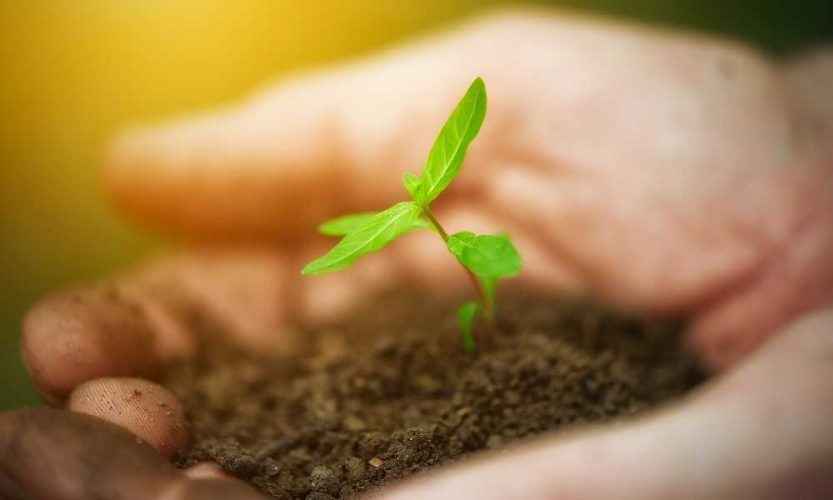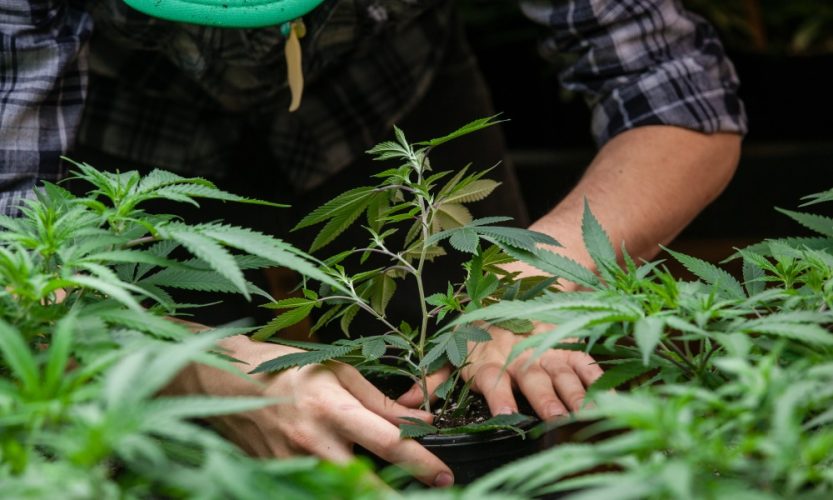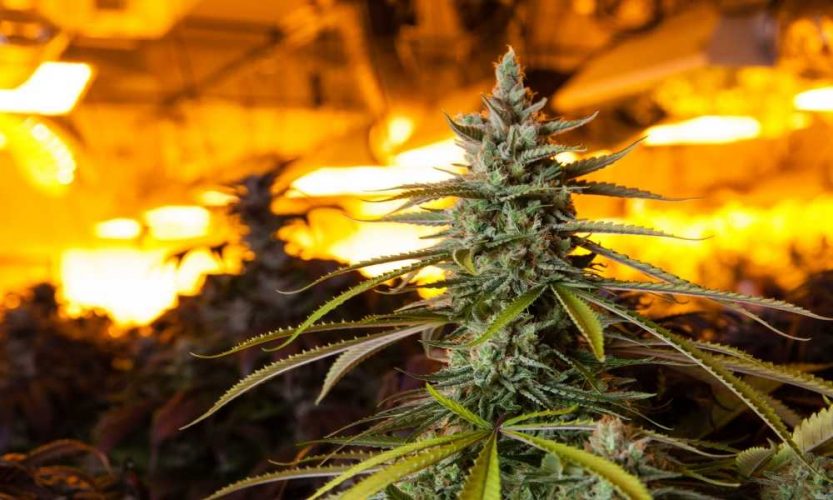When you’re searching for an LED grow light, there are a lot of factors to consider. Between wattage, lumens, and PAR Output, it can start to feel a little like a math test.
This article aims to answer a key question that many growers have: How Long Does an LED Grow Light Last?
Knowing the expected lifespan of your light is important, as it can help you budget and save you money.
LED lights are widely known to be the longest-lasting lights available for indoor growing. Even the smallest LEDs will last 50,000 hours while higher-end models can last over 100,000 hours.
However, those numbers don’t really help us to understand the true lifespan of the light. How long will 50,000 hours actually be, once you factor in dark hours?
Luckily, it’s fairly simple to figure out. And since most lights fall into one of two categories ( 50,000 hrs and 100,000 hrs ), you’ll only need to do the equation a couple of times!
Free Cannabis Seeds? Check out my list of the best seed bank promotions – Including FREE Seeds, discount codes, and giveaways!
How to calculate the true lifespan of your grow light

Let’s say your light states that it comes with a 50,000-hour lifespan and you’re planning to use it from seed to harvest. To determine what that means for you, we can use a simple set of equations.
Step 1: determine how many hours per day you plan to light your plant.
Your plants will need a minimum of 13 hours of daily light during the veg cycle (most experienced growers choose to do either 18 or 20 hours of “awake time” per day) and exactly 12 hours of light during the flower cycle.
For this example, let’s say your lights will be on for 18 hours per day during veg and 12 hours during flower.
Step 2: determine how long you’ll be vegging your plants.
This can be as little as 45 days and as long as 5 months (or longer) depending on a variety of factors.
Autoflower plants will generally veg for 4-6 weeks before automatically switching to flower. On the other hand, some people use low-stress training (LST) or other methods that can extend the veg stage for months.
If you’re not sure what to expect, it’s okay to go with the average until you get some grows under your belt. For the sake of this example, we’ll use a relatively common length of time for the veg cycle: 90 days.
Step 3: factor the number of veg hours you’ll use per plant.
This is a basic multiplication problem based on the info above:
18 hours per day (multiplied by) 90 days in the veg stage = 1,620 veg hours.
Step 4: repeat the formula to determine how many hours each plant will flower.
We’ve already done the first step: we know that plants in flower should have 12 hours of both light and dark time each day. So we can skip straight to step two, which is going to be a little harder.
The amount of time your plant will flower depends on the strain and the type of seed. This is another example of a number you might have to estimate until you have more experience with your strains and grow style.
Autoflower seeds generally take the journey from seed to harvest much faster, and will only flower for 4-6 weeks before harvest. On the long end of the spectrum, some plants will flower for 3 months.
We’re going to go with another average number for the sake of this example. Let’s say 60 days.
12 hours per day (multiplied by) 60 days in the flower stage = 720 flower hours.
Step 5: add your totals together and divide by your light’s lifespan hours.
Understanding that each plant should use 1,620 veg hours and 720 flower hours, each plant should take roughly 2,340 hours away from your light’s lifespan.
50,000 lifespan hours (divided by) 2,340 hours per plants = 21 total grows (rounding down)
Based on these calculations, a full spectrum, seed-to-harvest light with the industry-standard lifespan will last you just over 21 full grows. Assuming that your grow lasts 5 or 6 months, you can expect a quality lamp to last almost a decade!
This is a simple equation that you can use to determine your grow light’s lifespan. Just substitute our numbers with the ones that apply to your light!
Other factors to consider

Obviously, there are many factors that play into your plant’s total grow times, all of which affect how we determine your grow light’s lifespan. We’ll cover a few of the biggest factors here so that you have an idea of what to look for.
Seed or Clone
How you’re starting your grow will have an impact on your total veg time. Clones are planted during a period of stress (they just got cut off their mother plant) and usually take 7-10 days to fully recover and take root.
This means that they will generally veg an extra week or two compared to seeds that begin sprouting immediately.
Strain
Another consideration is the strain of cannabis you are growing and whether or not it is an Autoflower seed.
If you’re using bag seed, you’re obviously not going to know what strain you have. Online seed banks generally provide strain-specific information including grow times.
If the information you find doesn’t specify, make sure to ask whether the listed times are seed-to-harvest. Some sites only show the average length of one stage or the other, but not both. You’ll need to clarify this so you don’t get caught off guard.
Autoflower seeds get their name because they are bred to grow from seed to harvest without needing a light trigger to switch from veg to flower. They are also known for being very speedy growers… most make the journey from seed to harvest in 8-12 just weeks.
Pro Tip: If you have enough space or are only growing one seed at a time, we recommend a 12/12 schedule for all plants (even Autoflowers) during the flowering stage. While an Autoflower doesn’t need the switch, it also doesn’t need the additional light time. Save those precious hours on your light’s lifespan and keep your flowering plant at 12/12.
Training techniques
During the veg stage, you have some choices to make that will affect how long it lasts. The biggest choice is whether or not to use low-stress training (LST) techniques on your plant.
The purpose of LST is to increase the total yield of your plant by manipulating its growth. By strategically trimming and cutting your plant’s growth, you can force the plant to develop extra growth nodes.
The more growth nodes your plant develops, the more bud will grow during flower. Since there is literally no limit to how much you can train your plant, this is one of the single most-used ways to increase plant yield.
Despite its name, low-stress training is still stressful on your plant. Some techniques are more stressful than others, but any LST will slow your plant’s growth and extend the overall length of your veg stage.
Temperature
Cannabis is a warm-climate plant and doesn’t like to be cold. This means growers in cooler climates will need to provide a heat source in their grow space to ensure it stays between 75 and 85 degrees Fahrenheit.
Failure to keep an appropriate temperature for your plant can slow growth significantly, so pay attention to this when you’re setting up your grow room!
Pro tip: A common mistake new growers make when providing heat for their cold-climate grow room is to warm the air but forget about the floor. Cold concrete can radiate through fabric pots and chill the roots from the ground up, which can go undetected. If your plants are growing slowly and you can’t find any other reason, this might be it!
Preferred result
The last factor for how to determine your grow light’s lifespan is to consider the result you want to get from the high.
There is a general rule about when to harvest your cannabis plant: when the trichomes are amber in color. But the actual window for harvesting is much wider.
If you’re hoping to get a light, cerebral high that gives you an energy boost, you may choose to harvest earlier, when trichomes are mostly cloudy and only slightly amber. This will shorten the flowering time for your plant since you will harvest it early.
On the other hand, flowering your plant until most of the trichs are dark amber will also impact the result. These buds will provide a heavier, full-body high, but will also take a little longer.
Final Thoughts

There are a lot of things to consider when you determine your grow light’s lifespan. We hope that this article helps to simplify at least one of those factors for you!
The good news is that most LED grow lights are going to last a very long time. One more reason we think LEDs are the best choice for indoor growing.
If you have any tips or questions about how to determine your grow light’s lifespan, let me know in the comments! And as always, if you like what you read, share us with your friends!
Happy Growing!
Originally posted 2018-03-27 15:19:42.


 James Alexander
James Alexander